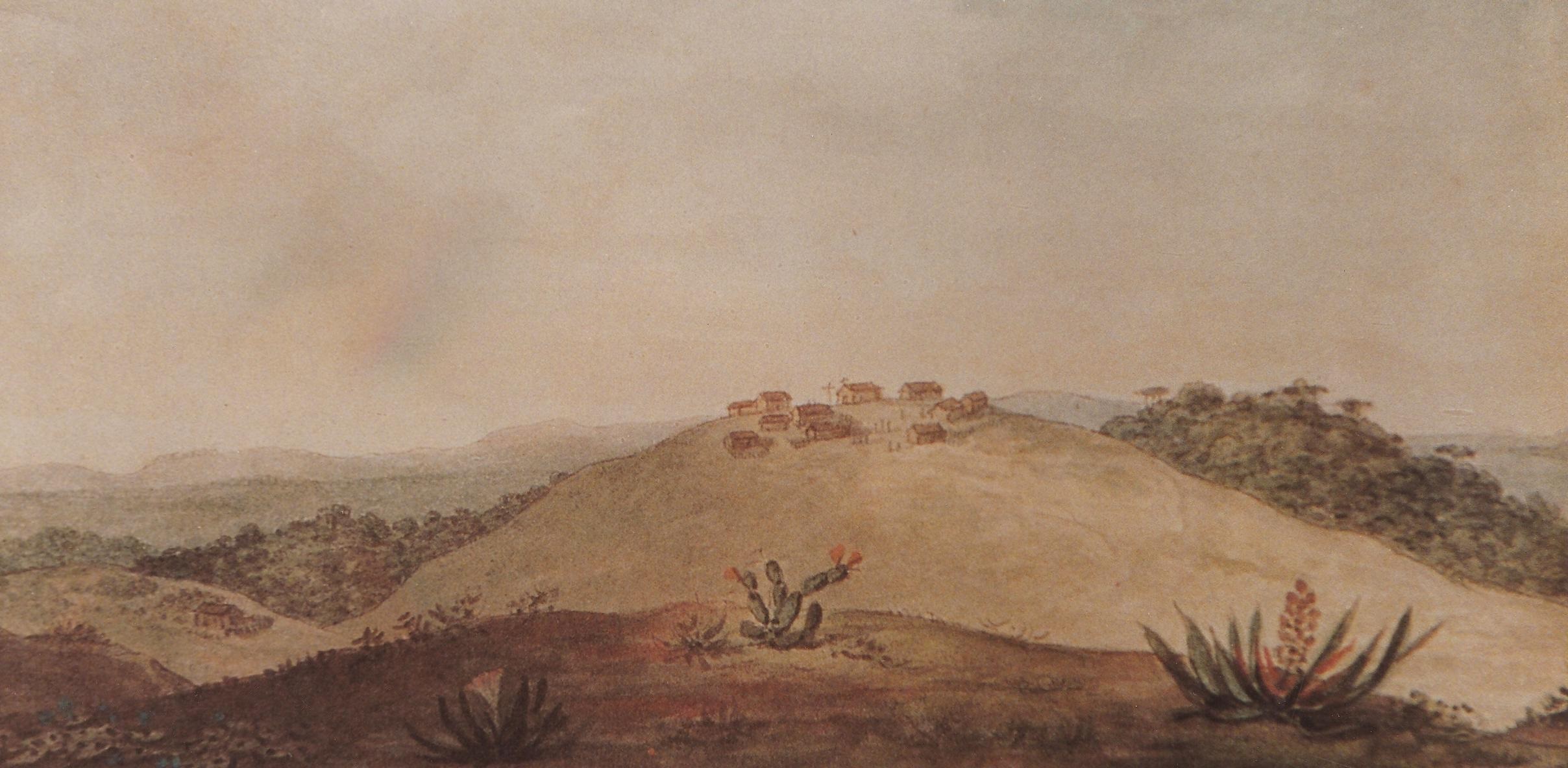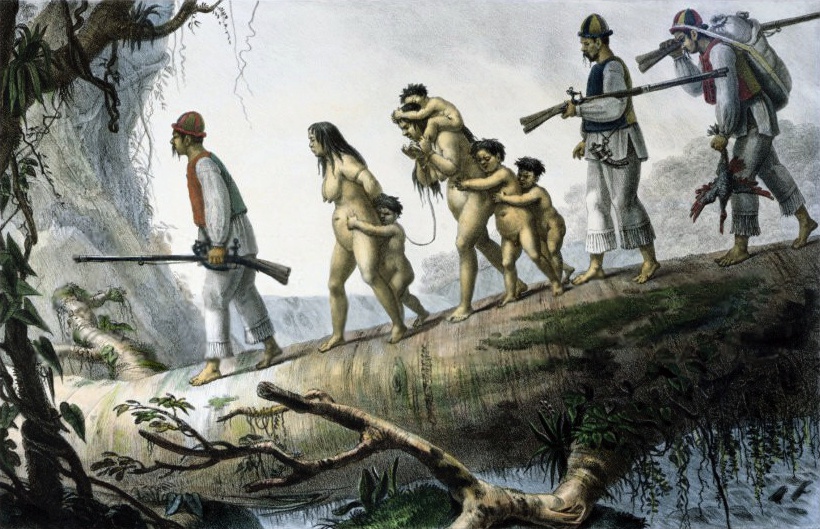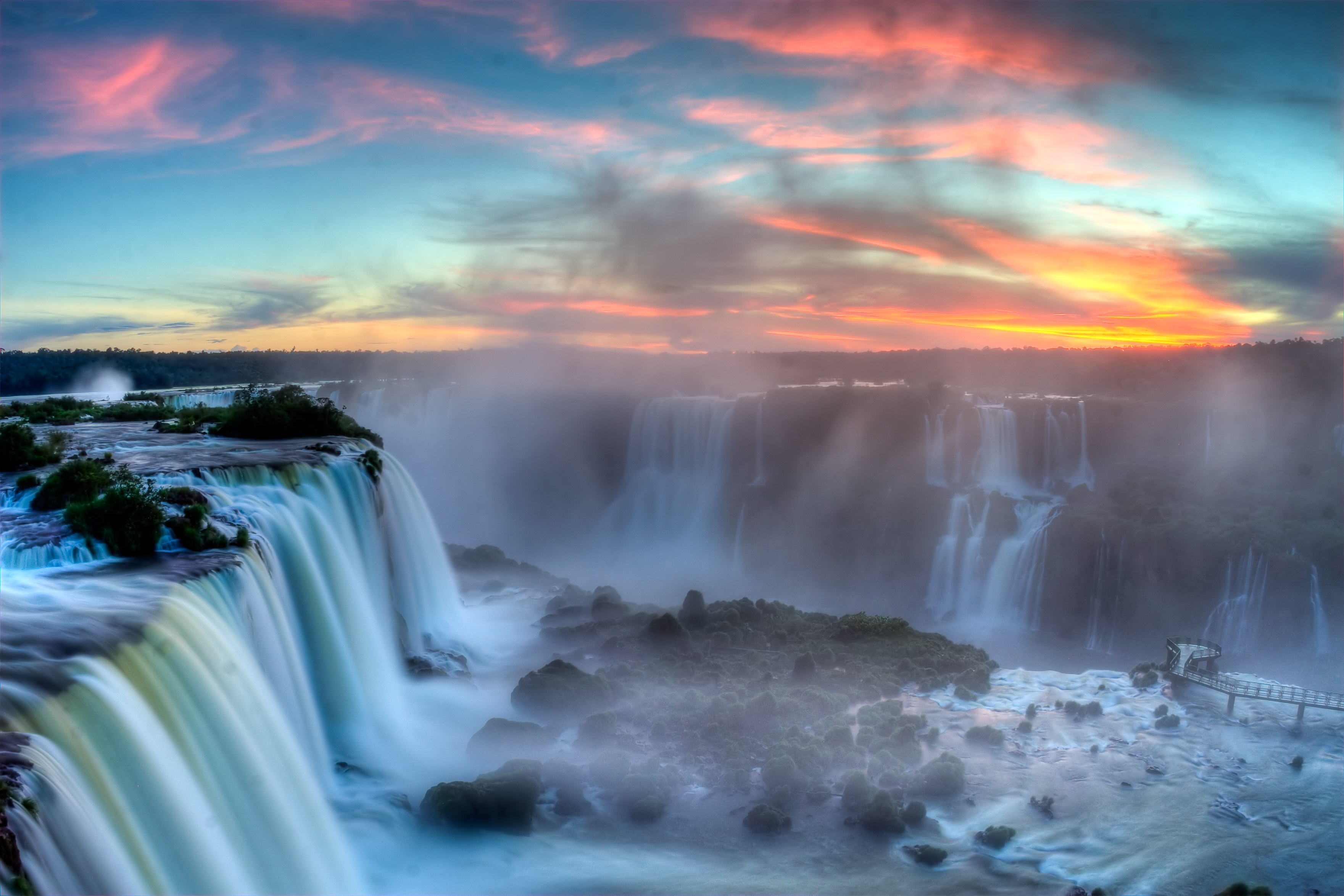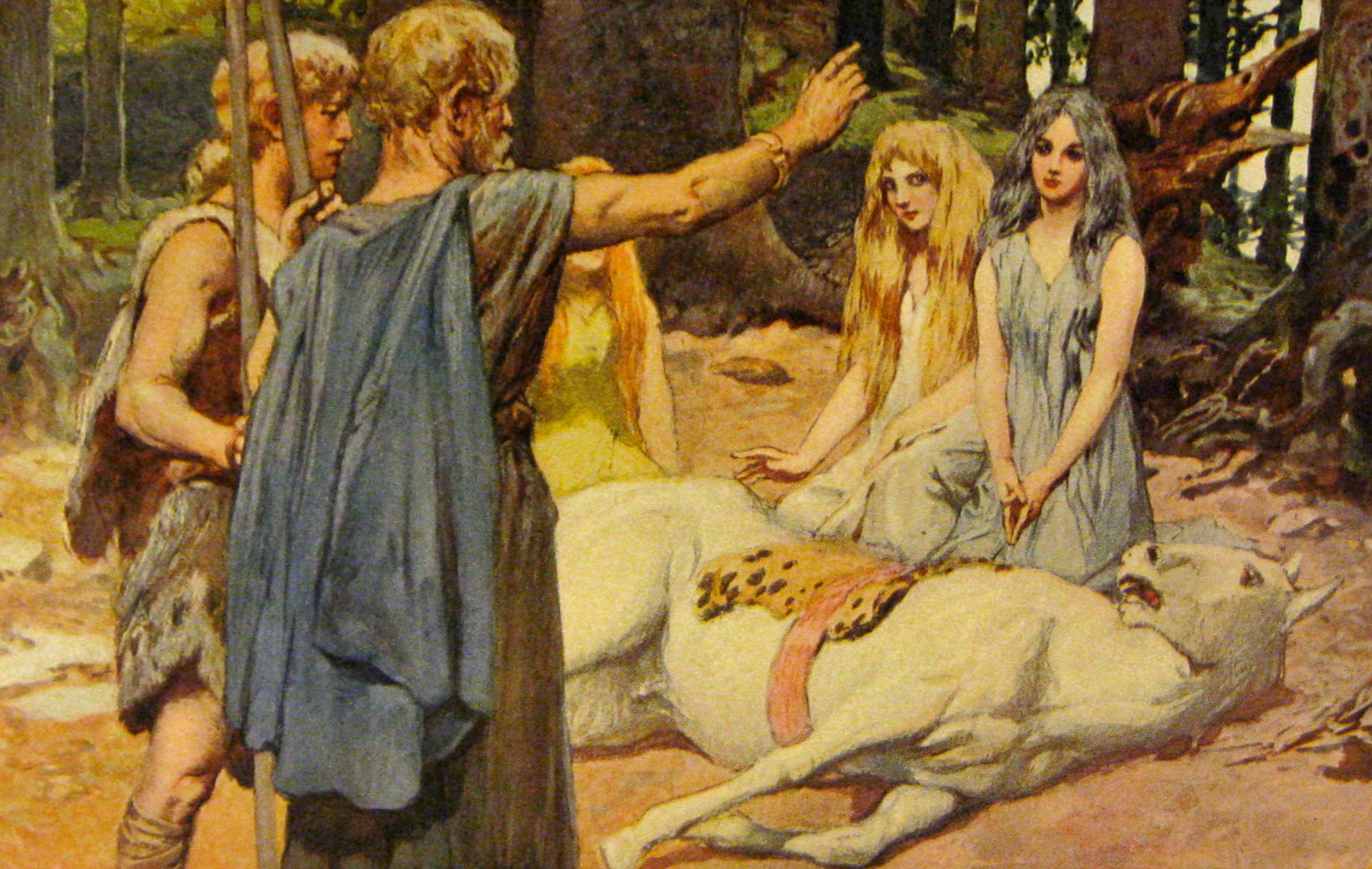|
Ponta Grossa
Ponta Grossa () is a municipality in the state of Paraná, southern Brazil. The estimated population is 355,336 according to official data from the Brazilian Institute of Geography and Statistics and it is the 4th most populous city in Paraná (76th in Brazil). It is also the largest city close to Greater Curitiba region, so within a radius of 186 miles (300 km) of Ponta Grossa. It is also known as ''Princesa dos Campos'' (in English: ''Princess of the Fields'') and ''Capital Cívica do Paraná'' (in English: ''Civic Capital of Paraná''). The city is connected to the ''Caminho das Tropas'' (in English: ''Path of the Troops''), being one of the network of routes used by drovers (''tropeiros'') in the middle of a high hill inside a grassy vegetation. The city is considered of average size, located around a central hill, while most of its growth occurred in the second half of the twentieth century with the weakening of the primary economy. Ponta Grossa is one of the larg ... [...More Info...] [...Related Items...] OR: [Wikipedia] [Google] [Baidu] |
Municipalities Of Brazil
The municipalities of Brazil () are administrative divisions of the states of Brazil, Brazilian states. Brazil currently has 5,571 municipalities, which, given the 2019 population estimate of 210,147,125, makes an average municipality population of 37,728 inhabitants. The average state in Brazil has 214 municipalities. Roraima is the least subdivided state, with 15 municipalities, while Minas Gerais is the most, with 853. Northern states are divided into small numbers of large municipalities (e.g. Amazonas (Brazilian state), Amazonas is divided into only 62 municipalities), and therefore they cover large areas incorporating several separated towns or villages that do not necessarily conform to one single conurbation. Southern and eastern states on the other hand, are divided into many small municipalities (e.g. Minas Gerais), and therefore large urban areas usually extend over several municipalities which form one single conurbation. The Federal District (Brazil), Federal Distr ... [...More Info...] [...Related Items...] OR: [Wikipedia] [Google] [Baidu] |
Greater Curitiba
The Metropolitan Region of Curitiba, also known as Greater Curitiba, brings together 29 municipalities in the state of Paraná in a relative process of conurbation. The term refers to the extension of the capital of Paraná, forming with its bordering (or close) municipalities a continuous urban area. The population in 2022, according to the Brazilian Institute for Geography and Statistics was of 3,559,366 inhabitants. In urban planning circles, the greater Curitiba area has received attention for advancing sustainable urbanization. Its leaders integrated the Bus Rapid Transit (BRT) and city development, using high-capacity, high-quality dedicated busways Busways is an Australian bus company operating services in Sydney, and in the Central Coast, Mid North Coast regions of New South Wales and Adelaide. It is the largest privately owned bus operator in Australia. History The origins of Busw ... to guide growth along well-defined lineal axes. References Curitiba ... [...More Info...] [...Related Items...] OR: [Wikipedia] [Google] [Baidu] |
Settlement Geography
Settlement geography is a branch of human geography that investigates the Earth's surface's part settled by humans. According to the United Nations' Vancouver Declaration on Human Settlements (1976), "human settlements means the totality of the human community – whether city, town or village – with all the social, material, organizational, spiritual and cultural elements that sustain it." Classification Traditionally, it belongs to cultural geography and is divided into the geography of urban settlements ( cities and towns) and rural settlements (e.g. villages and hamlets). Thereby, settlements are mostly seen as elements of the cultural landscape that developed over time. Apart from Australia, Europe and India, the term is actually rarely used in English-speaking geography. One of the last English books on settlement geography was published by Cambridge University Press in the 1990s. However, it is a traditional and actual branch in many other countries (e.g., Germ ... [...More Info...] [...Related Items...] OR: [Wikipedia] [Google] [Baidu] |
Toponymy
Toponymy, toponymics, or toponomastics is the study of '' toponyms'' ( proper names of places, also known as place names and geographic names), including their origins, meanings, usage, and types. ''Toponym'' is the general term for a proper name of any geographical feature, and full scope of the term also includes proper names of all cosmographical features. In a more specific sense, the term ''toponymy'' refers to an inventory of toponyms, while the discipline researching such names is referred to as ''toponymics'' or ''toponomastics''. Toponymy is a branch of onomastics, the study of proper names of all kinds. A person who studies toponymy is called ''toponymist''. Etymology The term ''toponymy'' comes from / , 'place', and / , 'name'. The '' Oxford English Dictionary'' records ''toponymy'' (meaning "place name") first appearing in English in 1876 in the context of geographical studies. Since then, ''toponym'' has come to replace the term ''place-name'' in professional ... [...More Info...] [...Related Items...] OR: [Wikipedia] [Google] [Baidu] |
Debret Em Ponta Grossa
Jean-Baptiste Debret (; 18 April 1768 – 28 June 1848) was a French painter, who produced many valuable lithographs depicting the people of Brazil. Debret won the second prize at the 1798 Salon des Beaux Arts. Biography Debret studied at the French Academy of Fine Arts, a pupil of the great Jacques-Louis David (1748–1825) to whom he was related. He accompanied David to Rome in the 1780s. His debut was at the Salon des Beaux Arts of 1798, where he got the second prize. He travelled to Brazil in March 1816 as a member of the so-called French Artistic Mission, a group of bonapartist French artists and artisans bound to creating an arts and crafts lyceum in Rio de Janeiro (Escola Real de Artes e Ofícios) under the auspices of King D. João VI and the Count of Barca. The lyceum later became the Academia Imperial de Belas Artes (Imperial Academy of Fine Arts) under Emperor Dom Pedro I. As a painter favored first by the Portuguese court in exile and later by the imperia ... [...More Info...] [...Related Items...] OR: [Wikipedia] [Google] [Baidu] |
Foz Do Iguaçu
Foz do Iguaçu (; "Iguazu River mouth"), colloquially referred to as Foz, is the Brazilian city on the border of Iguaçu Falls. Foz in Portuguese language, Portuguese means the mouth or end of a river and Iguaçu in Guarani language, Guarani or Tupi language, Tupi comes from the words "''y''" , meaning "water" or "river", and "''guasu''" , meaning "big". The city is the 7th largest in the state of Paraná (state), Paraná with a population of approximately 258,000 inhabitants. It is approximately 650 km (400 mi) west of the capital of the state, Curitiba, being the westernmost city in that State. The inhabitants of the city are known as ''iguaçuenses''. The Iguaçu Falls located on the border of Argentina and Brazil and consisting of approximately 257 individual waterfalls over were chosen as one of the "''New Seven Wonders of Nature, New Natural Seven Wonders of the World''." The city is characterized by tourism and cultural diversity. There are about 80 Nationality, ... [...More Info...] [...Related Items...] OR: [Wikipedia] [Google] [Baidu] |
Metalworking
Metalworking is the process of shaping and reshaping metals in order to create useful objects, parts, assemblies, and large scale structures. As a term, it covers a wide and diverse range of processes, skills, and tools for producing objects on every scale: from huge ships, buildings, and bridges, down to precise engine parts and delicate jewellery. The historical roots of metalworking predate recorded history; its use spans cultures, civilizations and millennia. It has evolved from shaping soft, native metals like gold with simple hand tools, through the smelting of ores and hot forging of harder metals like iron, up to and including highly technical modern processes such as machining and welding. It has been used as an industry, a driver of trade, individual hobbies, and in the creation of art; it can be regarded as both a science and a craft. Modern metalworking processes, though diverse and specialized, can be categorized into one of three broad areas known as forming, cutt ... [...More Info...] [...Related Items...] OR: [Wikipedia] [Google] [Baidu] |
Intensive Farming
Intensive agriculture, also known as intensive farming (as opposed to extensive farming), conventional, or industrial agriculture, is a type of agriculture, both of arable farming, crop plants and of Animal husbandry, animals, with higher levels of input and output per unit of agricultural land area. It is characterized by a low :wikt:fallow, fallow ratio, higher use of inputs such as Capital (economics), capital, Labour (economics), labour, agrochemicals and water, and higher crop yields per unit land area. Most commerce, commercial agriculture is intensive in one or more ways. Forms that rely heavily on industrial engineering, industrial methods are often called industrial agriculture, which is characterized by technologies designed to increase yield. Techniques include planting multiple crops per year, reducing the frequency of fallow years, improving cultivars, mechanised agriculture, controlled by increased and more detailed analysis of growing conditions, including weather, ... [...More Info...] [...Related Items...] OR: [Wikipedia] [Google] [Baidu] |
Industrial Sector
In macroeconomics, the secondary sector of the economy is an economic sector in the three-sector theory that describes the role of manufacturing. It encompasses industries that produce a finished, usable product or are involved in construction. This sector generally takes the output of the primary sector (i.e. raw materials like metals, wood) and creates finished goods suitable for sale to domestic businesses or consumers and for export (via distribution through the tertiary sector). Many of these industries consume large quantities of energy, require factories and use machinery; they are often classified as light or heavy based on such quantities. This also produces waste materials and waste heat that may cause environmental problems or pollution (see negative externalities). Examples include textile production, car manufacturing, and handicraft. Manufacturing is an important activity in promoting economic growth and development. Nations that export manufac ... [...More Info...] [...Related Items...] OR: [Wikipedia] [Google] [Baidu] |
Secondary Sector Of The Economy
In macroeconomics, the secondary sector of the economy is an economic sector in the three-sector theory that describes the role of manufacturing. It encompasses industries that produce a finished, usable product or are involved in construction. This sector generally takes the output of the primary sector (i.e. raw materials like metals, wood) and creates finished goods suitable for sale to domestic businesses or consumers and for export (via distribution through the tertiary sector). Many of these industries consume large quantities of energy, require factories and use machinery; they are often classified as light or heavy based on such quantities. This also produces waste materials and waste heat that may cause environmental problems or pollution (see negative externalities). Examples include textile production, car manufacturing, and handicraft. Manufacturing is an important activity in promoting economic growth and development. Nations that export manufactured p ... [...More Info...] [...Related Items...] OR: [Wikipedia] [Google] [Baidu] |
German Culture
The culture of Germany has been shaped by its central position in Europe and a history spanning over a millennium. Characterized by significant contributions to art, music, philosophy, science, and technology, German culture is both diverse and influential. Historically, Germany was not a unified nation for long periods, leading to a wide variety of regional customs and traditions. From the medieval Holy Roman Empire to the modern Federal Republic, German culture has absorbed influences from across the continent and beyond. Key aspects include a strong emphasis on education and craftsmanship, a long literary tradition featuring figures like Goethe and Schiller, a musical heritage from Bach to Beethoven, and a philosophical legacy including Kant and Marx. Germany is also known for its numerous festivals, regional cuisine, and a commitment to preserving its historical heritage while embracing contemporary trends in art, architecture, and popular culture. Language German is the ... [...More Info...] [...Related Items...] OR: [Wikipedia] [Google] [Baidu] |
Vila Velha State Park
Vila Velha State Park () is a state park in the city of Ponta Grossa, Paraná State, Brazil. It covers . It is located at one hundred kilometers from Curitiba, capital of the State of Paraná. The set of formations resembles a medieval city with its castles and towers in ruins, hence its name. The average height of the stone columns and walls is twenty meters and can reach thirty meters or more at some points, depending on the uneven terrain. See also * Iguaçu National Park Iguaçu National Park () is a National park (Brazil), national park in Paraná State, Brazil. It comprises a total area of and a length of about , of which are natural borders by bodies of water and the Argentine and Brazilian sides together c ... References External linksMineropar - Parque Estadual Vila Velha {{DEFAULTSORT:Vila Velha State Park State parks of Brazil World Heritage Sites in Brazil Protected areas established in 1990 Protected areas of Paraná (state) Ponta Grossa 1990 est ... [...More Info...] [...Related Items...] OR: [Wikipedia] [Google] [Baidu] |






